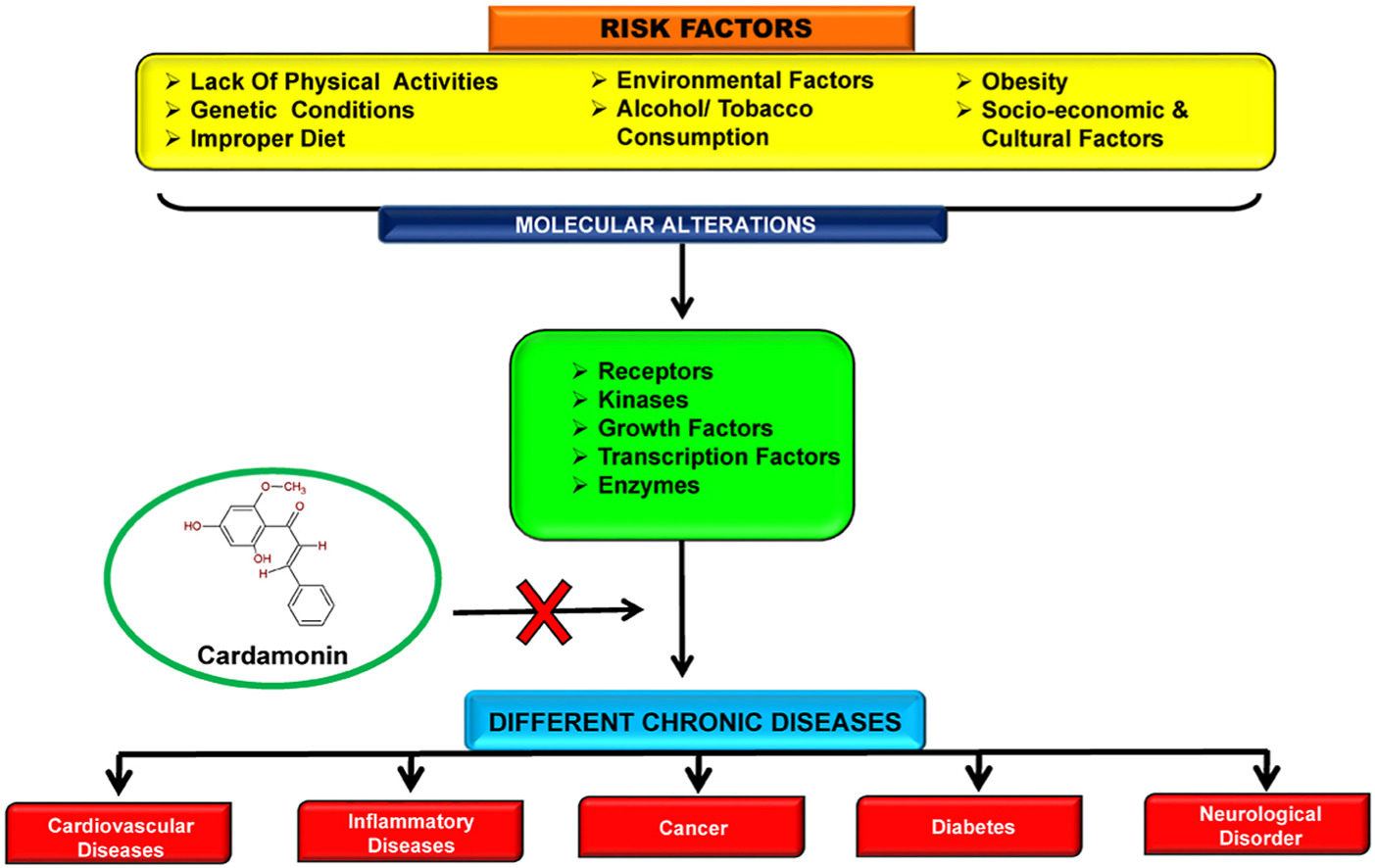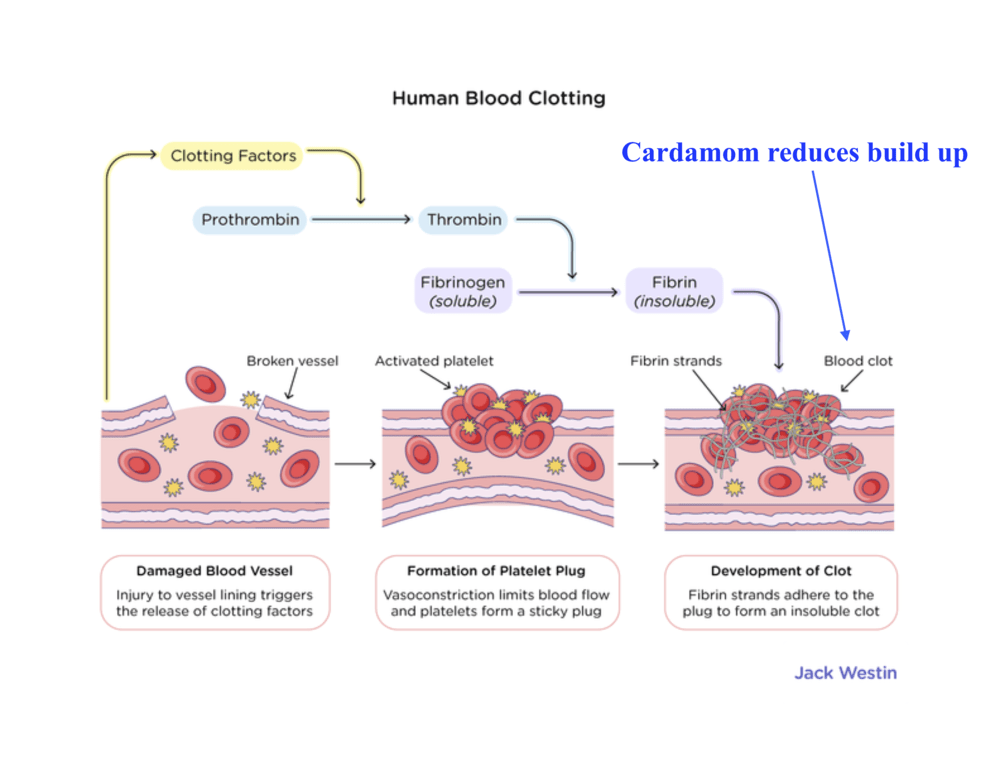
Hypertension (HT) is the most prevalent risk factor for ischemic heart disease and cerebrovascular accidents, which has been discussed in this author’s previous posts.1 Generally, HT is associated with low levels of antioxidants and reduced fibrinolysis (the process of preventing blood clotting).1(503)
Considering that drugs used to manage mild HT have been known to cause unfavorable side effects, botanical alternatives have become more appealing to the public, and researchers.1(503) One such botanical would include cardamom; a popular fruit and food additive (in the form of spice) used in many countries, which may also have anti-hypertensive properties. As a means of appreciating said plant and its effect upon heart health, the following will consider the same in greater detail.

Cardamom, also known as Elettaria cardamomum, has been used in traditional contexts as seen in the Unami and Ayurveda systems of medicine for halitosis, bronchitis, asthma, anorexia, dyspepsia (indigestion), renal disorders, gastrointestinal disorders, and cardiac disorders.1(503) Of particular interest is the clinical efficacy of cardamom in attenuating high blood pressure.
As a means of exploring said cardiac effects, Verma et al1(504) conducted a study whereby 20 participants (35-50 years of age) were recruited who had been screened with essential hypertension with readings of 140/90 to 159/99 mm Hg. If participants were found to have blood pressure readings in excess of 160/100 mm Hg and who were alcoholics, smokers, on lipid-lowering drugs, or who had renal disease, endocrine disease, diabetes, and weight reductions were excluded.1(504)

Participants who met the inclusion criteria underwent baseline intakes of blood pressure (mentioned earlier), and at 4-week intervals for 3 months. Furthermore, each participant consumed 3 g of cardamom powder split over two doses for a 12-week period.1(504) Blood samples were ascertained at baseline and at 4-week intervals for estimation of lipid profile to include serum cholesterol, triglycerides, and high-density lipoprotein (HDL-C).1(504)
During said intervals, fibrinogen and fibrinolysis were also recorded, although total antioxidant status was measured at baseline and at the end of the study.1(504) Interestingly, at the end of the 12-week period, there was an average drop of 19 mm Hg (systolic) and a 12 mm Hg (diastolic); such a reduction is relevant since research has indicated that lowering blood pressure as little as 5-6 mm Hg (systolic) and 10 mm Hg (diastolic) reduced risk of stroke by approximately 33% and coronary events by approximately 17%.1(504)

Other compelling changes included an improvement in fibrinolysis; a process that is highly regulated and implements enzymatic cascades to prevent unnecessary accumulation of fibrin and facilitates the removal of thrombi (i.e., blood clots, which is the final step in hemostasis).2 Said fibrinolytic activity is influenced by diet, drugs, and most relevantly, hypertension (or lack thereof).
Furthermore, the above study implementing cardamom also showed an increase in antioxidant status by approximately 90% after the 12-week trial period among hypertensive participants.1(505) Other beneficial changes (though not statistically significant) also included a 19% reduction in total cholesterol, a 25% reduction in LDL-C, followed by a 15% reduction in triglycerides; risk factors for cardiovascular disease.1(505) Although the study results are encouraging, Verma et al1(506) cautioned that long-term placebo controlled studies, and a larger sample size, would be required to truly define cardamom’s multiple therapeutic potential.
In conclusion, HT is the most prevalent risk factor for ischemic heart disease and cerebrovascular accidents. Although exercise and diet help mitigate high blood pressure, emerging evidence is suggesting the complementary role of botanicals, such as cardamom, as part of a larger and more inclusive intervention. As individuals continue seeking alternatives to conventional pharmaceutical approaches, botanicals are likely to gain further attention and use. Thus, it is paramount that research continues to elucidate the optimal dosages, risks, mechanisms, and overall health benefits of such botanicals.
References
1. Verma SK, Jain V, Katewa SS. Blood pressure lowering, fibrinolysis enhancing and antiocidant activities of Cardamom. Indian J Biochem Biophys. 2009;46(6):503-506. http://nopr.niscair.res.in/bitstream/123456789/7254/1/IJBB%2046(6)%20503-506.pdf. Accessed June 26, 2020.
2. Chapin JC, Hajjar KA. Fibrinolysis and the control of blood coagulation. Blood Rev. 2015;29(1):17-24. doi:10.1016/j.blre.2014.09.003.
-Michael McIsaac
